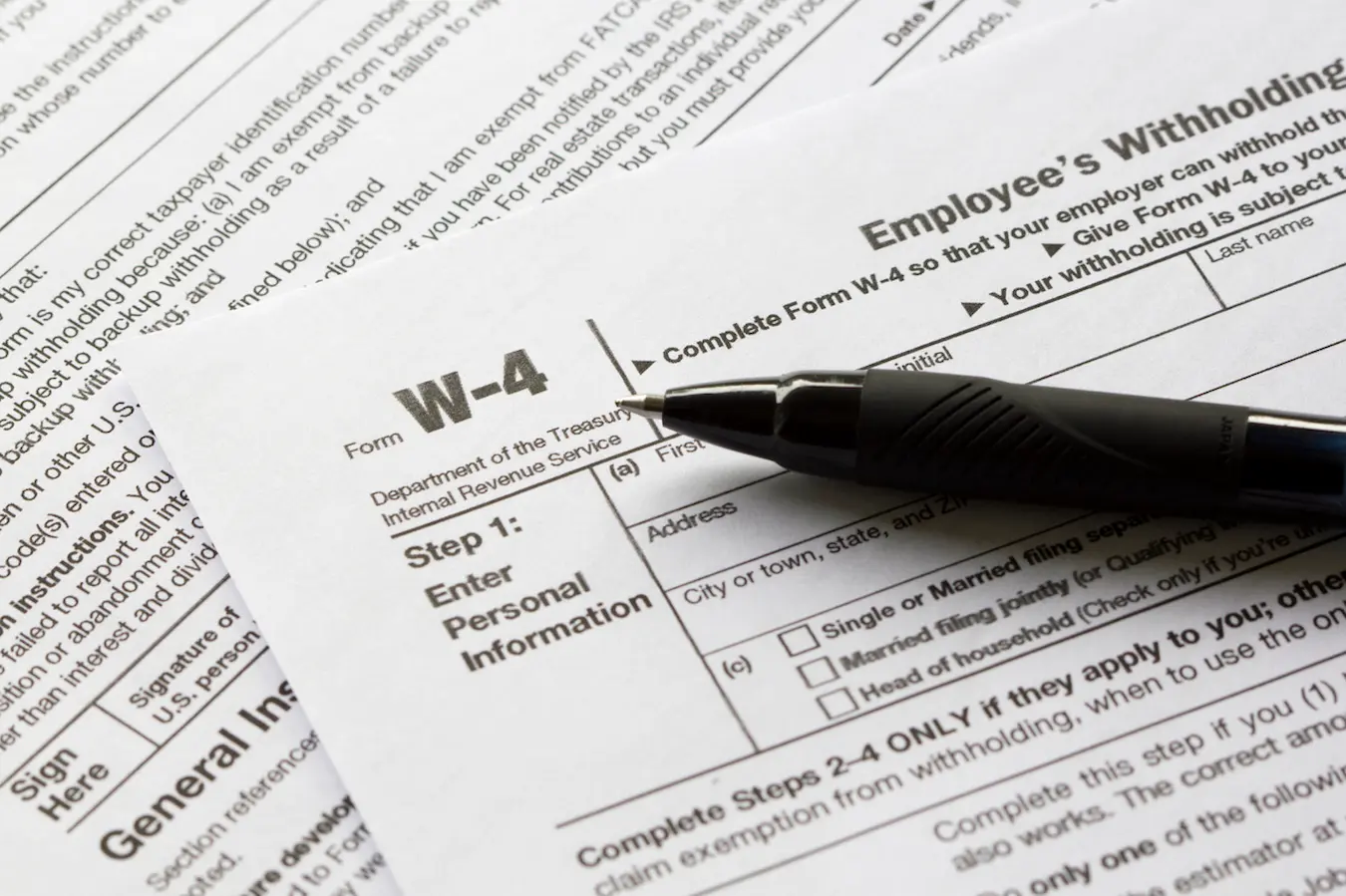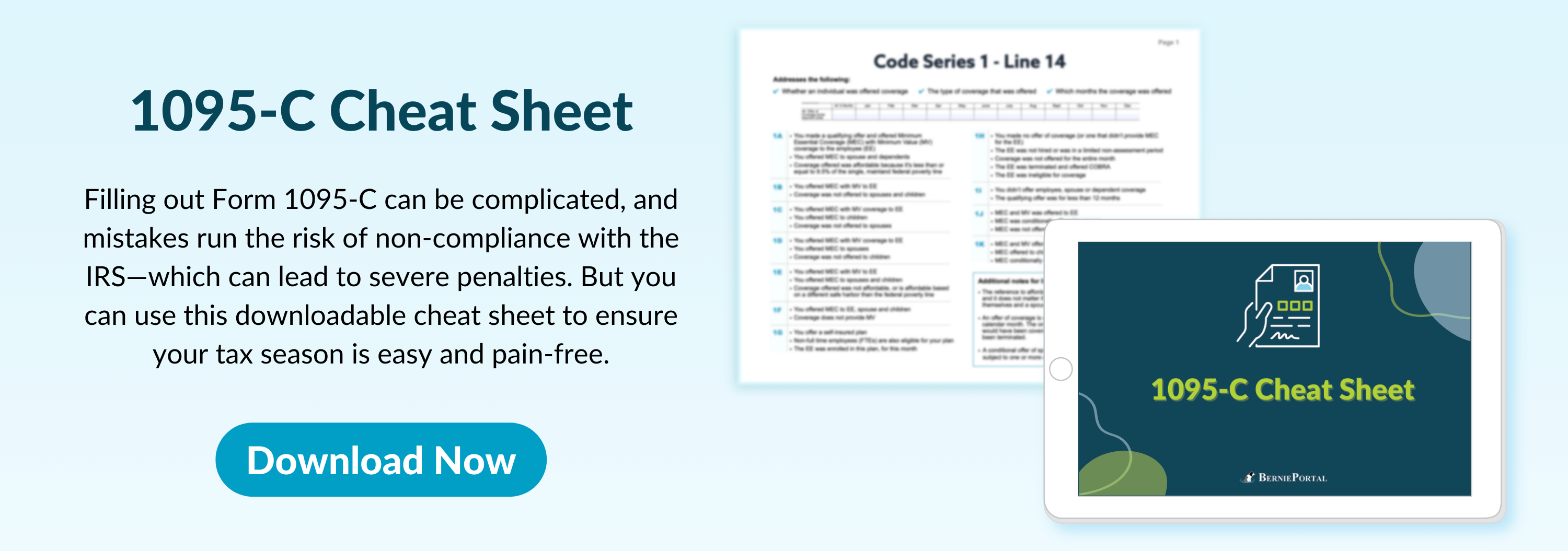
Written by
Sara Loomis
Sara is an aPHR-certified writer on the marketing team at BerniePortal. She writes about HR, healthcare, and benefits.
How to Fill Out Form W-4 in 2023

Form W-4 is crucial to employee tax reporting and employer withholding. This form got a major overhaul from the IRS in 2020, but there are some updates for 2023 as well. And many employees don’t know how to fill out Form W-4 correctly—which can lead to an unpleasant surprise when they owe more taxes than expected.
So, here’s a step-by-step guide to filling out Form W-4 in 2022 and 2023, including what it is and who’s required to complete it.
What Is Form W-4?
Form W-4—also known as Employee’s Withholding Certificate—is an IRS tax document employers use to determine how much of an employee’s wages to withhold from each paycheck for income taxes.
Employers calculate payroll taxes based on an employee’s W-4 and make state and federal tax payments on the employee’s behalf. Filling out Form W-4 incorrectly could result in substantial tax obligations—plus penalties and interest—when an employee files their annual tax return, which depends on an employer-provided Form W-2.
Employees can also choose to have additional taxes withheld from their wages—particularly if they hold multiple jobs, if they receive income from self-employment, or if their spouse also earns income.
Download a fillable PDF copy of Form W-4 (updated for 2023).
Who Is Required to Fill Out Form W-4?
According to the IRS, employers are “required by law to withhold employment taxes from their employees,” but the responsibility for filling out Form W-4 correctly belongs to the employee, not the employer. Specifically, new hires must complete Form W-4 before they can receive their first paycheck. To stay compliant, most employers provide Form W-4 during onboarding, along with Form I-9.
If an employee already has a Form W-4 on file with their employer, they do not need to complete a new one each year, even when the IRS redesigns the form—as it did in 2020. Employers may continue to calculate income tax withholdings based on an employee’s most recent W-4.
However, employees should review—and update, if needed—their W-4 withholding information whenever they experience a life event that affects their financial situation, such as a marriage or divorce, the birth of a child, or starting another job.
How Has Form W-4 Changed for 2023?
The 2023 version of Form W-4 reflects the significant changes made in 2020, including:
- Fewer lines to complete
- No option to lower withholding by using personal allowances
- The option to lower withholding by claiming dependents
- The option to lower withholding by using a deductions worksheet
But the IRS also made a few tweaks specifically for the 2023 form. These include:
- Removing references to the IRS tax withholding estimator
- Updating the figures on the Deductions worksheet
- Extra guidance under Step 2, Multiple Jobs or Spouse Works, clarifying eligibility for checking that box
How to Fill Out Form W-4 in 2023
Since 2020, filling out Form W-4 is essentially a five-step process.
Only Steps 1 and 5 are required for all workers, but responding to Steps 2-4—if they apply to an employee’s particular situation—can ensure more accurate withholding with regards to an employee’s tax liability.
The General Instructions on Page 2 of the form provide more information on each step, privacy, who can claim exemption, and when to use the online estimator. For multiple-job situations, the employee should fill out Steps 3-4 for the highest paying one and leave those steps blank on the other W-4s.
The five steps include:
Step 1: Enter Personal Information
The employee should enter their full name, social security number, address, and filing status: single or married filing separately, married filing jointly or qualifying widow(er), or head of household.

Step 2: Multiple Jobs or Spouse Works
The employee should complete this step only if they hold multiple jobs—including freelance income—or if their spouse also works.
To calculate the accurate withholding amount in this step, employees should do only one of the following:
- Use the IRS's Tax Withholding Estimator (which will also be used for Steps 3-4), OR
- Use the Multiple Jobs Worksheet on page 3 of the form, OR
- Check the box on Step 2 if there are only two total jobs. (This box should also be checked on the W-4 for the other job.)

Remember, for if there are multiple jobs, the employee should only fill out Steps 2-4 for the highest paying one and leave those steps blank on the other W-4s.
Step 3: Claim Dependents
To claim dependents, an employee’s total income should be $200,000 or less if filing as an individual—or $400,000 or less if married and filing jointly.
If applicable, employees should multiply the number of qualifying children (age 17 and under) by $2,000 and multiplying the number of other dependents by $500. They should add those dollar amounts and enter the total on line 3.

Step 4: Other Adjustments
In this optional section, an employee can indicate whether they want to withhold more or less from their paycheck by listing other income, deductions other than the standard deduction, or an extra amount to withhold per pay period.
For example, an employee may choose to report passive income from interest, dividends, or retirement in this section to decrease their liability on their annual individual tax return.
To reduce their withholding, an employee may also choose to claim deductions other than the standard deduction—which is $13,850 for single and married filers (filing separately), $27,700 for married filers (filing jointly), and $20,800 for heads of household in 2022.

The IRS has provided a Deductions Worksheet on page 3 to help filers determine the most accurate withholding amount.
Step 5: Sign Here
The last step for employees is self-explanatory: they should sign and date the form.

Employers Only
There is one final step that employers must fill out once they receive a completed form from an employee. The employer should enter the name of their organization and its address, the employee’s first date of employment, and their employer identification number (EIN).

For more information on how to complete Form W-4, check out the IRS’s website—including FAQs—and read the General Instructions on Page 2 of the form.
Additional Resources
You can stay informed, educated, and up-to-date with important HR topics using BerniePortal’s comprehensive resources:
- BernieU—free online HR courses, approved for SHRM and HRCI recertification credit
- BerniePortal Blog—a one-stop shop for HR industry news
- HR Glossary—featuring the most common HR terms, acronyms, and compliance
- HR Guides—essential pillars, covering an extensive list of comprehensive HR topics
- HR Party of One—our popular YouTube series and podcast, covering emerging HR trends and enduring HR topics

Written by
Sara Loomis
Sara is an aPHR-certified writer on the marketing team at BerniePortal. She writes about HR, healthcare, and benefits.
Related Posts
Part-time work is becoming increasingly common in today’s workforce—especially for...
As you know, healthcare and benefits can be complicated, which can make the enrollment...
With the deadline for filing and distributing 1095-C forms approaching, staying...
A strong paid time off (PTO) policy helps retain current talent and attract prospective...










Submit a Comment